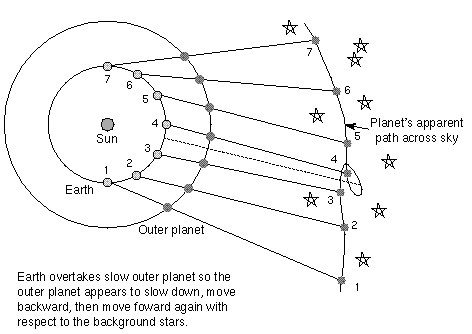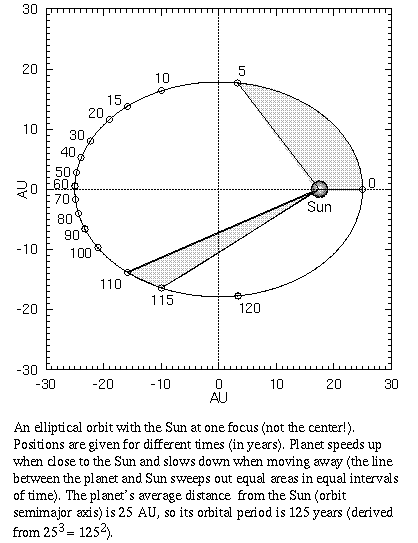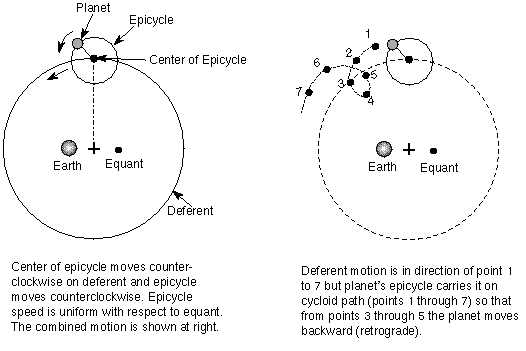I still argue that this remains the purpose of science. It is the journey, the pursuit of truth, not actually acquiring 'truth' that matters. We will never truly know 'the truth' but the journey ensures we continually get closer to understanding the universe. Many religions believe that scientists are closer to 'God' because of this.

James Linzel's List: Assignment 3: History of Western Astronomical Thought
-
-
The emphasis was on the process of learning about the universe rather than attaining the goal. But people eventually got tired of learning and wanted absolute answers.
-
-
Socrates (lived 470--399 B.C.E.) disagreed with the Sophists, teaching that we can attain real truth through collaboration with others. By exploring together and being skeptical about ``common sense'' notions about the way things are, we can get a correct understanding of how our world and society operate. This idea of being skeptical so that a truer understanding of nature can be found is still very much a part of modern science.
-
-
-
Our view of the history of astronomy will now skip almost 1500 years to the next major advances in astronomy
-
They had preserved and translated the Greek writings and adopted the Greek ideals of logic and rational inquiry. Islamic astronomers were careful observers of the sky and created accurate star catalogs and tables of planet motions. Many of the names of the bright stars in our sky have Arabic names (e.g., Deneb, Alberio, Aldebaran, Rigel to name a few).
-
-
-
- What two basic kinds of models have been proposed to explain the motions of the planets?
- What is the Ptolemaic model? What new things did Ptolemy add to his model?
- Why are epicycles needed in Ptolemy's model?
-
- In what ways was the Ptolemaic model a good scientific model and in what ways was it not?
- What is the Copernican model and how did it explain retrograde motion?
-
-
-
Giordano Bruno (lived 1548--1600 C.E.) revived Democritus' (a contemporary of Socrates) view that the Sun was one of an infinite number of stars.
-
- The superior light-gathering power of his telescope over the naked eye enabled him to see many, many new fainter stars that were never seen before. This made Bruno's argument more plausible.
- The superior resolution and magnification over the naked eye enabled him to see pits and craters on the Moon and spots on the Sun. This meant that the Earth is not only place of change and decay!

Galileo Galilei (1564--1642 C.E.) was the first person we know of that used the telescope for astronomical observations (starting in 1609). The telescope was originally used as a naval tool to assess the strength of the opponent's fleet from a great distance. He found many new things when he looked through his telescope:
-
-
-
Johaness Kepler (lived 1571--1630 C.E.) was hired by Tycho Brahe to work out the mathematical details of Tycho's version of the geocentric universe.
-
Kepler was motivated by his faith in God to try to discover God's plan in the universe---to ``read the mind of God.'' Kepler shared the Greek view that mathematics was the language of God. He knew that all previous models were inaccurate, so he believed that other scientists had not yet ``read the mind of God.''
-
-
-
Every age has its paradigms. Though scientists try to be objective, philosophical considerations do intrude on the scientific, creative process. That is not a bad thing because these beliefs are crucial in providing direction to their inquiries and fuel for the creativity mill.
-
Experiments are the sole judge of scientific truth---nature eventually wins. The ideas are crucial to understanding the world but they eventually yield to the facts. Science makes us confront the world.
-
-
-
Plato gave his students a major problem to work on. Their task was to find a geometric explanation for the apparent motion of the planets, especially the strange retrograde motion. One key observation: as a planet undergoes retrograde motion (drifts westward with respect to the stars), it becomes brighter. Plato and his students were, of course, also guided by the Pythagorean Paradigm. This meant that regardless of the scheme they came up with, the Earth should be at the unmoving center of the planet motions. One student named Aristarchus violated that rule and developed a model with the Sun at the center. His model was not accepted because of the obvious observations against a moving Earth.
-
You need to explain the following concepts within your assignment:
1. Notice that their model of the universe was accurate for the evidence they had at the time. However, the apparent backwards movement of the known planets was difficult to explain using the geocentric model. Hence why Plato gave his students the task of adjusting the model to explain the 'retrograde motion'.
-
-
- The celestial objects are bright points of light while the Earth is an immense, nonluminous sphere of mud and rock. Modern astronomers now know that the stars are objects like our Sun but very far away and the planets are just reflecting sunlight.
- The Greeks saw little change in the heavens---the stars are the same night after night. In contrast to this, they saw the Earth as the home of birth, change, and destruction. They believed that the celestial bodies have an immutable regularity that is never achieved on the corruptible Earth. Today astronomers know that stars are born and eventually die (some quite spectacularly!)---the length of their lifetimes are much more than a human lifetime so they appear unchanging. Also, modern astronomers know that the stars do change positions with respect to each other over, but without a telescope, it takes hundreds of years to notice the slow changes.
- Finally, our senses show that the Earth appears to be stationary! Air, clouds, birds, and other things unattached to the ground are not left behind as they would be if the Earth was moving. There should be a strong wind if the Earth were spinning as suggested by some radicals. There is no strong wind. If the Earth were moving, then anyone jumping from a high point would hit the Earth far behind from the point where the leap began. Furthermore, they knew that things can be flung off an object that is spinning rapidly. The observation that rocks, trees, and people are not hurled off the Earth proved to them that the Earth was not moving. Today we have the understanding of inertia and forces that explains why this does not happen even though the Earth is spinning and orbiting the Sun. That understanding, though, developed about 2000 years after Plato.
-
List Info
8 items | 210 visits
A summary of Western astronomical thought and its development over the last two millenia.
Updated on Dec 17, 09
Created on Jan 29, 08
Category: Schools & Education
URL:




